The EU Strategy for the Danube Region (EUSDR) is a macro-regional strategy adopted by the European Commission in December 2010 and endorsed by the European Council in 2011.
The Strategy was jointly developed by the Commission, together with the Danube Region countries and stakeholders, in order to address common challenges together.
The Strategy seeks to create synergies and coordination between existing policies and initiatives taking place across the Danube Region.

Source:http://www.danube-region.eu/about/priorities
How is the Strategy run
- The European Council is the highest political body of the EU, composed of heads of state and government representatives of the 27 Member States. The Council gave the mandate to the European Commission to prepare the Strategy, and endorsed it in June 2010.
- The European Commission, as the executive of the EU, prepared the Strategy in 2010 in consultation with all partner countries. The Commission helps implement the Strategy by facilitating and supporting actions of the participating countries. The Commission coordinates the Strategy at the policy level, assisted by a High Level Group.
- The High Level Group (HLG) on macro-regional strategies is made up of official representatives from all EU Member States. It assists the Commission in the policy coordination of the Strategy. The Commission consults the HLG for modifications to the Strategy and the action plan, as well as for reports and monitoring. The HLG also addresses policy orientation and prioritisation.
- Each Priority Area is jointly coordinated by two participating countries (or regions), who work in consultation with the Commission, relevant EU agencies and regional bodies. For each Priority Area, each of the two responsible countries designates a Priority Area Coordinator.
- The Priority Area Coordinators (PACs) ensure the implementation of the Action Plan defined for the Priority Area by agreeing on planning, with targets, indicators and timetables, and by making sure there is effective cooperation between project promoters, programmes and funding sources. They also provide technical assistance and advice. The coordinators work in consultation with the Commission, and relevant EU agencies and national/regional bodies. You can find the list of PACs along with their contact information on the Contact PACs & NCPs page.
- The National Contact Points (NCPs) coordinate and keep an overview of the participation of their country in the implementation of the EUSDR including all 11 Priority Areas. The role of the NCP is to promote the Strategy and inform relevant stakeholders on the national level of key developments. NCPs also assist the European Commission in its facilitation role. You can find the list of NCPs along with their contact information on the Contact PACs & NCPs page.
- The EUSDR Laboratory Group (Lab Group) is a networking platform bringing together representatives of EU Cohesion Policy programmes, European Commission representatives and interested PACs. The Lab Group, facilitated by INTERACT Point Vienna, provides a space for actors from different sectors to exchange ideas regarding operational aspects of the Strategy and discuss current issues. INTERACT draws ideas and solutions from the Lab Group discussion to produce guidelines for PACs.
- INTERACT Point Vienna, having expertise in European Territorial Cooperation in the Danube region (ETC programmes as well as IPA-CBC programmes with accession countries), is involved in the promotion of the Strategy to ETC stakeholders as well as in the promotion of ETC in the EUSDR. INTERACT is also engaged in operational aspects of the EUSDR and supports the Commission in its coordination tasks of the EUSDR. In particular INTERACT is involved in facilitating interaction between various stakeholders, managing the EUSDR website, producing and disseminating information and publications, supporting exchange among PACs and NCPs in their tasks and promoting the Strategy predominantly at the European level.

